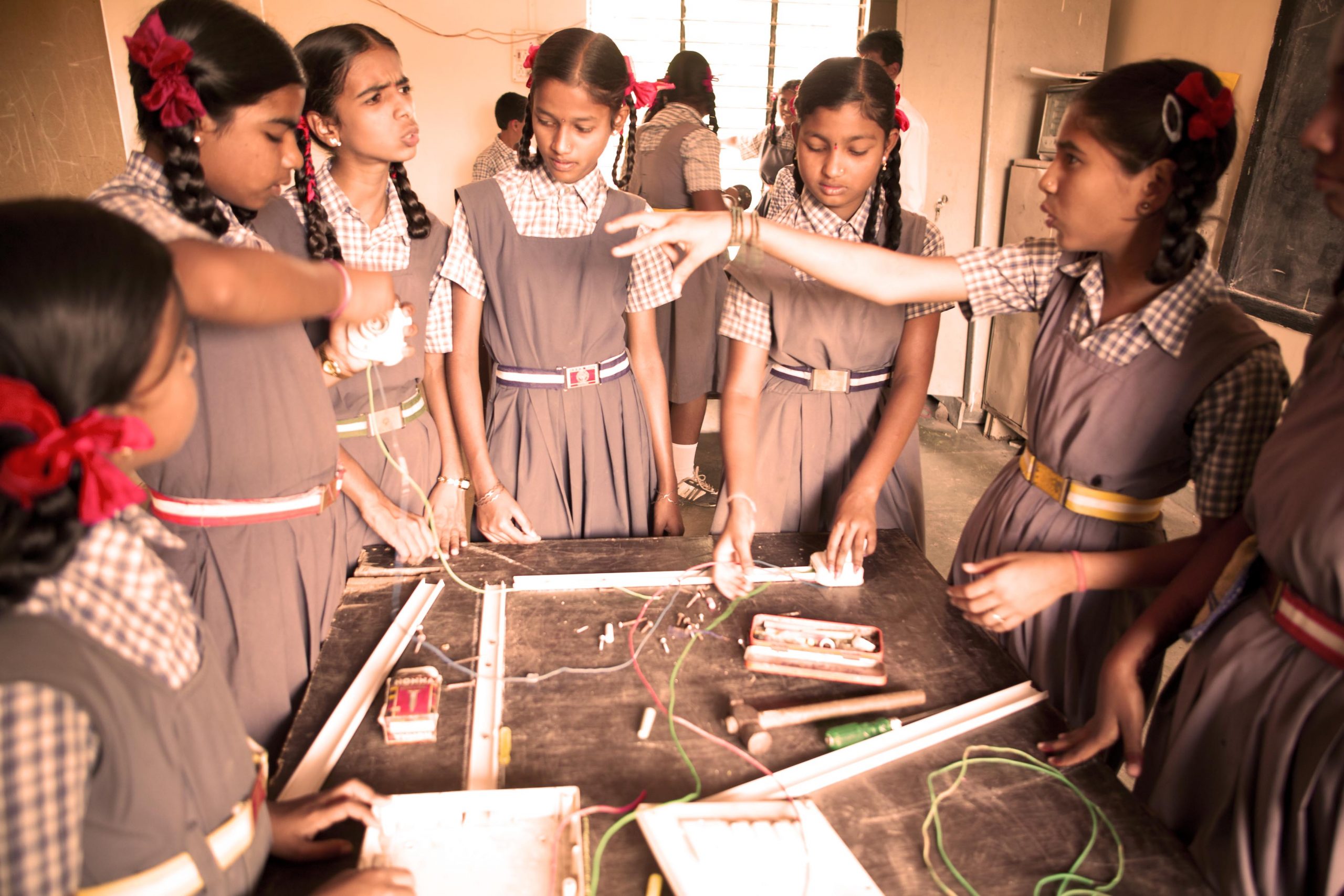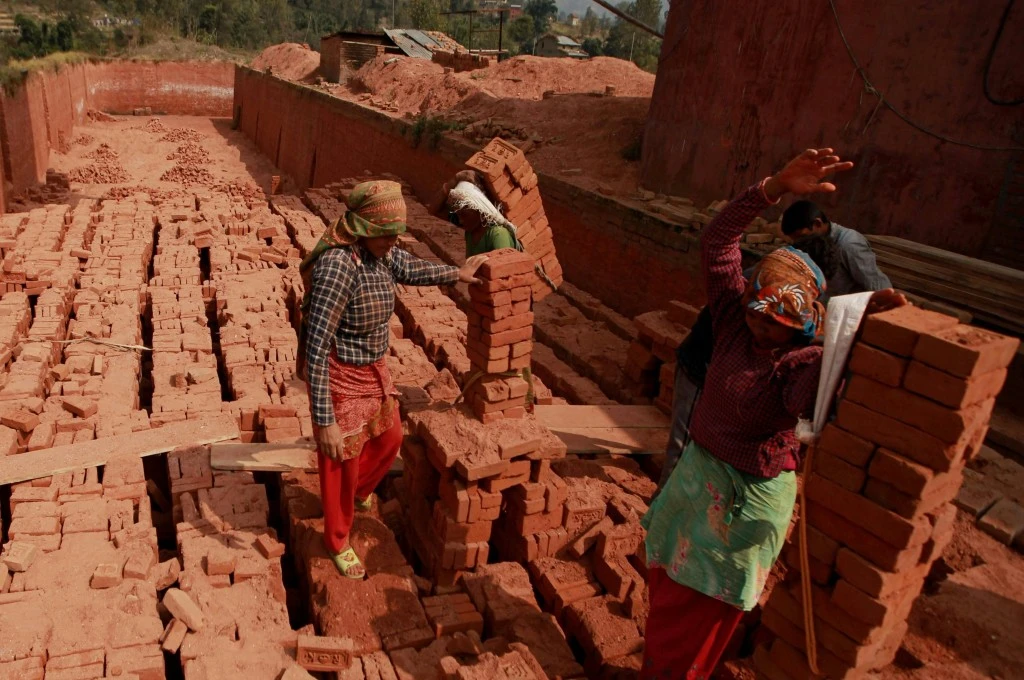Vulnerability during the age of adolescence (between 10 to 19 years), can lead to life-long disadvantages for young boys and girls. Due to debilitating gender norms however, girls are especially susceptible, and events such as child marriage or unplanned pregnancy occurring during this age can have catastrophic implications for their future.
It has been estimated that India loses USD 56 billion a year in potential earnings because of adolescent pregnancy, higher secondary school dropout rates, and joblessness among young women.
Barriers adolescent girls face, and the consequences of trying to overcome them
When a girl enters adolescence, she encounters a host of barriers that threaten a safe and stable transition into adulthood. By the time she reaches secondary school age, she is often viewed as a burden, or an asset for work, childbearing, or sex. Her household may not perceive the value of investing in her development, and she may be required to discontinue her education or not pursue livelihood opportunities so that she can get married.
India loses USD 56 billion a year in potential earnings because of adolescent pregnancy, higher dropout rates, and joblessness among young women.
If she tries to challenge the decisions being taken for her or resist gendered social expectations, she usually faces negative consequences. If she chooses to express agency by wanting to continue her education, delay marriage, choose her own partner, gain financial independence, or voice opinions freely, she may be punished by her family and community.
Such ‘punishment’ may range from being ridiculed or stigmatised, to forced withdrawal from school, forced marriage, seclusion within the home, and even life-threatening sanctions in the form of beatings, physical abuse, rape or other forms of violence.
Such adverse consequences against challenges to the status quo are known as backlash, and they help preserve gender inequity within a patriarchal society.
Related article: The problem with ‘women empowerment’ schemes
Understanding backlash
Despite the increased focus and investment in adolescent programming, evidence on backlash against girls’ expressions of agency is sparse. While the experience of backlash is common, there have been few attempts at systematically understanding its drivers, forms, and mitigating factors.
Without a good understanding of the manifestations of such unintended adverse consequences, it is difficult for programmes aimed at empowering girls to anticipate and mitigate likely risks they face when they express agency in their families and communities.
To bridge this gap, Dasra undertook an exploratory study involving 73 adolescent- and youth-focused nonprofit organisations. The aim was to understand in detail the nature and extent of backlash experienced by girls exhibiting agency, as well as the backlash faced by nonprofit organisations themselves while implementing programmes aimed at advancing girls’ empowerment.
Findings from this study suggest that as many as 85 percent of responding organisations were familiar with at least one incident of backlash against girls who displayed agency or defied traditional gender norms.
- Half of all responding organisations described incidents in which a girl was refused permission to participate in outdoor sports for fear of adverse reactions from the community or likely teasing from boys.
- 60 percent of organisations reported that they were aware of a girl whose parents had denied her permission to continue attending their programmes due to fear of (or as a result of) exercising agency through demanding extra time for studies in lieu of household chores or expressing opinions freely, for example.
- More than half of the responding organisations were also familiar with girls who faced violence, denial of food, or forced seclusion when they expressed agency through actions such as negotiating career aspirations, accessing livelihood training programmes or refusing to marry against their will.
In addition to the experiences of backlash against girls who express agency, participating nonprofits also reported instances of backlash faced by boys in the form of ridicule, when they expressed gender-egalitarian attitudes or behaviours that defied traditional norms, such as performing household chores.

If a girl chooses to express agency by wanting to continue her education, gain financial independence, or voice opinions freely, she may be punished by her family and community | Photo courtesy: Charlotte Anderson
Findings also indicated that organisations themselves faced backlash from the community for their programmes that challenged to prevailing social norms.
- Over 60 percent of organisations implementing programmes aimed at empowering girls–such as building leadership skills, providing sexual and reproductive health information, encouraging completion of education, building livelihood skills or helping delay marriage–reported experiencing backlash.
- A third of the responding organisations were forced to modify programme content (for instance drop modules on sensitive topics such as sexual health or child marriage) due to negative reactions from community members.
- More than half of the responding organisations were denied entry into communities, or had their field-level programme implementers threatened, verbally abused, and even physically attacked for implementing empowerment programmes.
Related article: An evidence-based guide to empowering adolescents
Preventing and mitigating backlash
We cannot address the effects of backlash unless we acknowledge them openly and systematically. Recognising that even well-intentioned programmes may have unintended consequences that do not ultimately empower girls but reinforce their lack of power, is the first step.
Well-intentioned programmes may have unintended consequences that do not ultimately empower girls but reinforce their lack of power.
The pervasiveness of backlash highlighted by this study calls for more deliberate action in understanding and implementing strategies that can help address it.
Based on their experiences of encountering backlash, several responding organisations described strategies that they used to prevent or mitigate it. This largely involved sensitising and building trust with the people who are key in making or influencing decisions affecting the lives of adolescent girls.
Intuitively, it follows that empowerment outcomes can only be fully met when the adolescent girl participating in the programme has an enabling environment. Keeping this in mind, examples of strategies used by organisations to achieve this include:
- Engaging parents, communities, and government authorities: Implementing organisations often build rapport with some decision makers in a girl’s life, most commonly her parents. However, our findings suggest that reaching out to the entire range of stakeholders at the family, community, and local government can play an important role in preventing adverse consequences. What’s more, creating supportive networks in communities by involving women’s groups, local elected representatives, or religious leaders has also helped in not only avoiding backlash, but also managing it when it occurs.
- Having champions and positive role models: Several organisations noted that the presence of adolescent and parent champions helps alleviate fears of deviating from social norms, especially in the eyes of parents of girls, as they demonstrated that delaying marriage, achieving higher education or making their own life choices has not hurt their family’s reputation, but instead helped them thrive.
- Changing perceptions of gender roles: While empowering girls is essential, organisations stressed that developing new notions of masculinity and femininity among men and boys also plays an important role in achieving gender egalitarian outcomes.
- Instituting organisational processes: Organisations pointed out that creating strong backlash management strategies from the time of programme inception is critical. Further, processes to anticipate and recognise different forms of backlash when it occurs, in addition to the steps involved in mitigating it must be outlined, and field staff should be trained in implementing them. Having safety protocols for the physical security of programme staff, as well as reporting or documenting such instances was also emphasised by organisations.
Funders can play a role in supporting normative change by investing in organisational efforts aimed at creating an enabling environment for adolescents to thrive in.
- Invest for the long term: It is critical to recognise that changing social norms, especially inter-generational gender norms, is an incremental process. When investing in empowerment efforts, funders must be prepared to invest for the long term in order to see the benefits. This also includes a willingness to learn constantly and adapt, without losing sight of the end outcome which may come several years down the line.
- Support the pre-implementation phase of empowerment programmes: Funders must realise the importance of investing in initial preparatory phases that precede implementation of empowerment programmes, as it is during this time that organisations lay the foundation to create an enabling environment for adolescents at the family and community level. Further, creating funding structures that are conducive to innovation and course-correction by organisations can supplement their efforts to create sustaining change.
It’s time we realise that the girl effect 1does not happen in a vacuum. And neither should the work involved in achieving it.
To know more about backlash, and what organisations can do to mitigate it, read the full report here.
- The girl effect is defined as the unique potential of 600 million adolescent girls to end poverty for themselves and the world.






